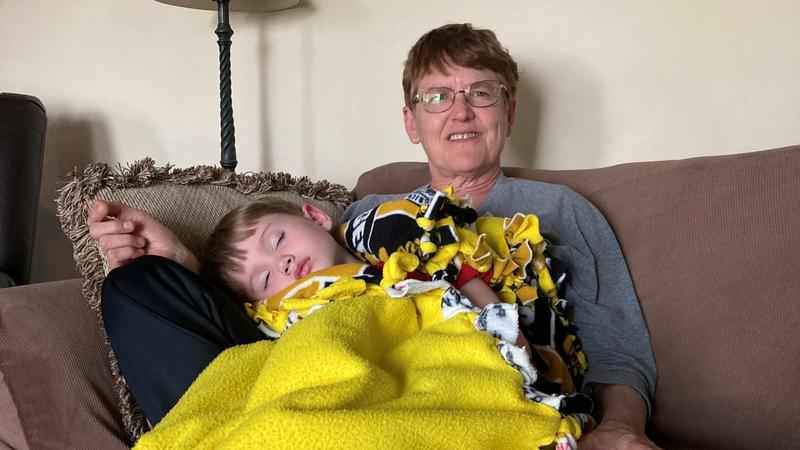New Alzheimer’s disease research highlights rural vs. urban disparities
[anvplayer video=”5047210″ station=”998122″]
New research shows rural parts of the U.S. have higher mortality rates from Alzheimer’s disease than urban areas.
Scientists and researchers from across the world are meeting now to discuss the findings at the Alzheimer’s Association International Conference in Denver. Meanwhile, the Minnesota-North Dakota Chapter of the Alzheimer’s Association is doing its part to improve diagnosis and care for those who live in rural parts of the state.
Barb Magnusson can’t read books anymore or follow cooking recipes.
"What she can do, though, is show us the love that she has for us," said Beth Magnusson, Barb’s daughter.
Barb was diagnosed with Alzheimer’s disease in 2015 at the young age of 57.

Barb Magnusson
Beth says Barb enjoys playing with her grandchildren.
"She plays with the kids like tomorrow is her last day," Magnusson said.
Magnusson’s family lives in Gibbon, a small community in south-central Minnesota.
"Being in a rural area has not helped with the diagnosis at all," Magnusson said.
She says they only had access to a primary care physician in their rural community.
According to the 2020 Alzheimer’s Association’s facts and figures report, 94% of primary care physicians state it’s important to assess all older patients for cognitive impairment, but fewer than half (47%) say it is their standard protocol to do so.
"They did a fantastic job of, first of all, noticing those early symptoms and advocating for, you know, let’s get to the bottom of this," Mollie O’Brien, the chief strategy officer of the MN-ND Chapter of the Alzheimer’s Association, said of Beth and Barb’s story.
"The doctor said, ‘Well, I don’t think she’s taking her medications right,’ and I said, ‘No, I think she’s fine with that, let’s do some more tests,’" Magnusson explained.
The MN-ND Chapter of the Alzheimer’s Association said new research indicates people living in rural parts of the state are at higher risk for slower detection, later diagnosis and less access to quality care.
Magnusson said, "It was very hard to hear the news of Alzheimer’s and then not know what to do next."
The association said it’s now offering virtual services to reach families in rural areas and pushing for more training with rural primary care physicians to become better partners in early diagnosis.
"The only thing that’s worse than walking out of an exam room with a dementia diagnosis is walking out and not knowing where to turn for help," O’Brien said.